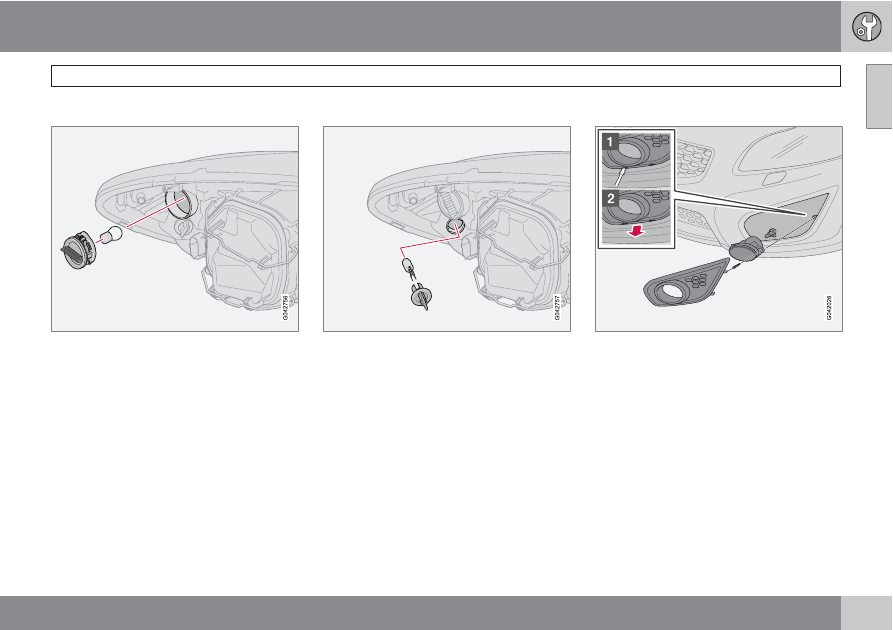Volvo C30 (2013 year). Manual - part 13

09 Maintenance and servicing
Replacing bulbs
09
``
*
Option/accessory, for more information, see Introduction.
231
Turn signal
1.
Turn the bulb holder counterclockwise and
remove it.
2.
Remove the bulb from the holder by press-
ing it in and twisting it counterclockwise.
3.
Insert a new bulb and reinstall the bulb
holder in the headlight housing.
Side marker light
1.
Turn the bulb holder counterclockwise,
pull it out, and replace the bulb.
2.
Reinstall the bulb holder. It can only be
installed in one position.
Front fog lights*
1.
Switch off all lights and turn the key to
position 0.
2.
Using a screwdriver or other suitable tool,
pry out the fog light cover and pull it
straight out as shown in the illustration.
> (Release the clips (1) and then pull
straight out (2).)
3.
Unscrew the lamp housing's retaining
screw and remove the housing.
4.
Disconnect the connector from the bulb.
5.
Turn the bulb counterclockwise and pull it
out.